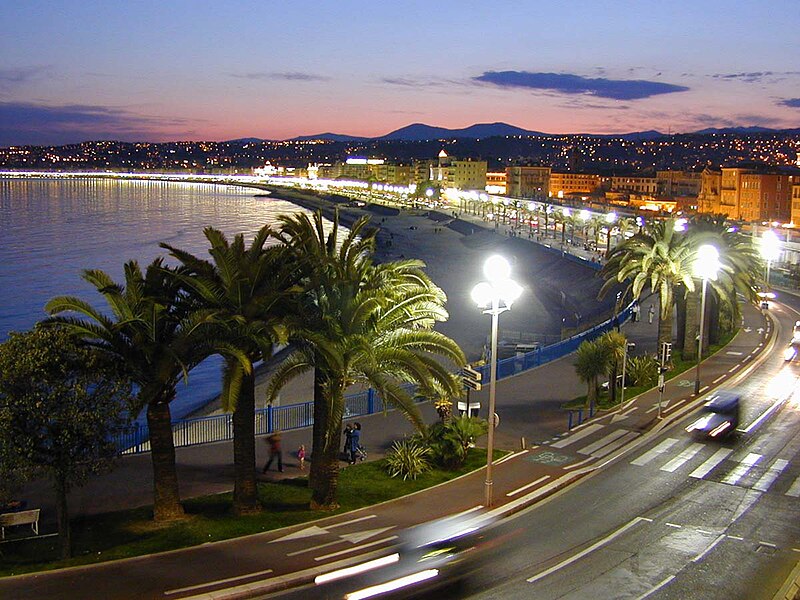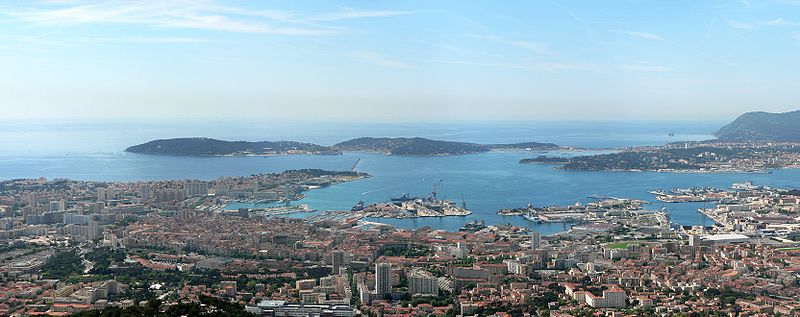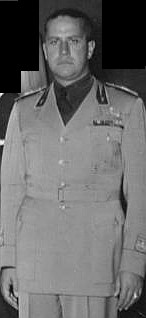 mountain range and the region around Nice, and to win the colonies in North Africa.
mountain range and the region around Nice, and to win the colonies in North Africa.  The offensive did not meet its planned goals, with the Italian forces making only limited headway
The offensive did not meet its planned goals, with the Italian forces making only limited headwayOn 10 June 1940, Italy declared war on France and Britain. The French government was already fleeing to Bordeaux and Paris was an open city. Feeling that the war would soon be over, Italian dictator Benito Mussolini said to Pietro Badoglio(one of many many Italian war criminals never brought to justice),
 the Chief of Staff of the Italian Royal Army (R, "I only need a few thousand dead so that I can sit at the peace conference as a man who has fought".Mussolini had the immediate war aim of expanding the Italian colonies in North Africa by taking land from the British and French colonies.
the Chief of Staff of the Italian Royal Army (R, "I only need a few thousand dead so that I can sit at the peace conference as a man who has fought".Mussolini had the immediate war aim of expanding the Italian colonies in North Africa by taking land from the British and French colonies.However, Italy was not prepared for war and Italy's armed forces made little impact during the last few days of the Battle of France. Mussolini was well aware of Italy's military limitations at the time, but he still sought to profit from Germany's successes.Of Italy's declaration of war, Franklin Delano Roosevelt—President of the United States—said:
On this tenth day of June 1940, the hand that held the dagger has struck it into the back of its neighbor.
Much of June was lost as the Italian armed forces prepared for an invasion. But, even after additional time for preparations, the hastily-prepared Italian forces were not at their prime. The Royal Italian Army massed 32 divisions in two armies on the French border. The Regia Aeronautica (Italian Royal Air Force) supported the Royal Army and flew 716 missions and dropped 276 t (304 short tons) of bombs. The Regia Marina (Italian Royal Navy) did little to support the invasion.
The French armed forces were in no shape to resist the Italians. The French Army (Armée de Terre) was already defeated in the north and only a relatively small force was maintained on the border with Italy. The French Air Force (Armée de l'Air) was relocating to French North Africa by the time of the Italian declaration of war and the subsequent offensive.
The French Navy (Marine Nationale) was the only service in a position to act against the Italians. At dawn on 14 June, the French 3rd Squadron based in Toulon
 carried out an operation in Italian waters. Four heavy cruisers and 11 destroyers opened fire on the oil storage tanks and military installations on the Ligurian coast and in the port of Genoa. No Italian aircraft appeared and the coastal artillery scored only one hit. The French destroyer Albatros
carried out an operation in Italian waters. Four heavy cruisers and 11 destroyers opened fire on the oil storage tanks and military installations on the Ligurian coast and in the port of Genoa. No Italian aircraft appeared and the coastal artillery scored only one hit. The French destroyer Albatros received a 155 mm (6.1 in) round on her boiler room, which killed 12 seamen.
received a 155 mm (6.1 in) round on her boiler room, which killed 12 seamen.On 16 June, the French sloop La Curieuse forced the Italian submarine Provana to surface off Oran
During the night of 16 June and into the morning of 17 June, Marshal Philippe Pétain proposed an armistice with the German government. On 20 June, the French government asked the Italian government for an armistice.
On 20 June, the Italian campaign began and, on 21 June, troops of the Italian Royal Army crossed the French border in three places The Italians attacked in two directions. One force attempted to advance through the Alps and another force attempted to advance along the Mediterranean coast towards Nice. Initially, the Italian offensive enjoyed a limited level of success. The French defensive lines on the Italian border were weakened due to French High Command shuffling forces to fight the Germans. Some French mountain units had been sent to Norway. However, the Italian offensive soon stalled at the fortified Alpine Line
 in the Alps had to stop due to a massive snow storm. The Italian forces attacking through the French Riviera advanced only about 5 mi (8.0 km) and were stopped in the vicinity of the town of Menton,
in the Alps had to stop due to a massive snow storm. The Italian forces attacking through the French Riviera advanced only about 5 mi (8.0 km) and were stopped in the vicinity of the town of Menton,  which was partially occupied by the Italian army; on the Côte d'Azur the Italian invasion was held up by a French NCO and seven men.
which was partially occupied by the Italian army; on the Côte d'Azur the Italian invasion was held up by a French NCO and seven men.
On 21 June, the French battleship Lorraine
 opened fire on the port of Bardia in Italian Libya.
opened fire on the port of Bardia in Italian Libya. French naval aircraft also attacked Taranto
French naval aircraft also attacked Taranto and Livorno in mainland Italy during some of the last actions of the French against the Italians.
and Livorno in mainland Italy during some of the last actions of the French against the Italians.During the invasion, Italian casualties were far greater than French casualties. Italian losses were 631 men killed, 2,361 wounded, 2,000 cases of frostbite and 616 men missing. This compares to French losses of 40 men killed, 84 wounded, and 150 men missing.
In the evening on 22 June 1940, France surrendered to Germany.

On 25 June, France and Italy signed an armistice. Galeazzo Ciano—who led the armistice delegation as Italian Minister of Foreign Affairs—reflected: "Mussolini is quite humiliated because our troops have not made a step forward."
 The debacle forced Mussolini to abandon his pretensions of reconstituting an Empire at French expense, and Italy dropped its claims to the Rhône Valley,
The debacle forced Mussolini to abandon his pretensions of reconstituting an Empire at French expense, and Italy dropped its claims to the Rhône Valley, Corsica, Tunisia, and Djibouti, settling for a modest 50 km (31 mi) demilitarized zone.With Germany′s blessing, Italy occupied Corsica and the Alpes-Maritimes,
Corsica, Tunisia, and Djibouti, settling for a modest 50 km (31 mi) demilitarized zone.With Germany′s blessing, Italy occupied Corsica and the Alpes-Maritimes,  plus some areas of French territory along the Franco-Italian border further north. Nevertheless,
plus some areas of French territory along the Franco-Italian border further north. Nevertheless,The strutting Italian dictator had been quickly deflated—all the more so because of the miserable showing of the Italian army against a handful of French troops.For the terms see Franco-Italian Armistice
